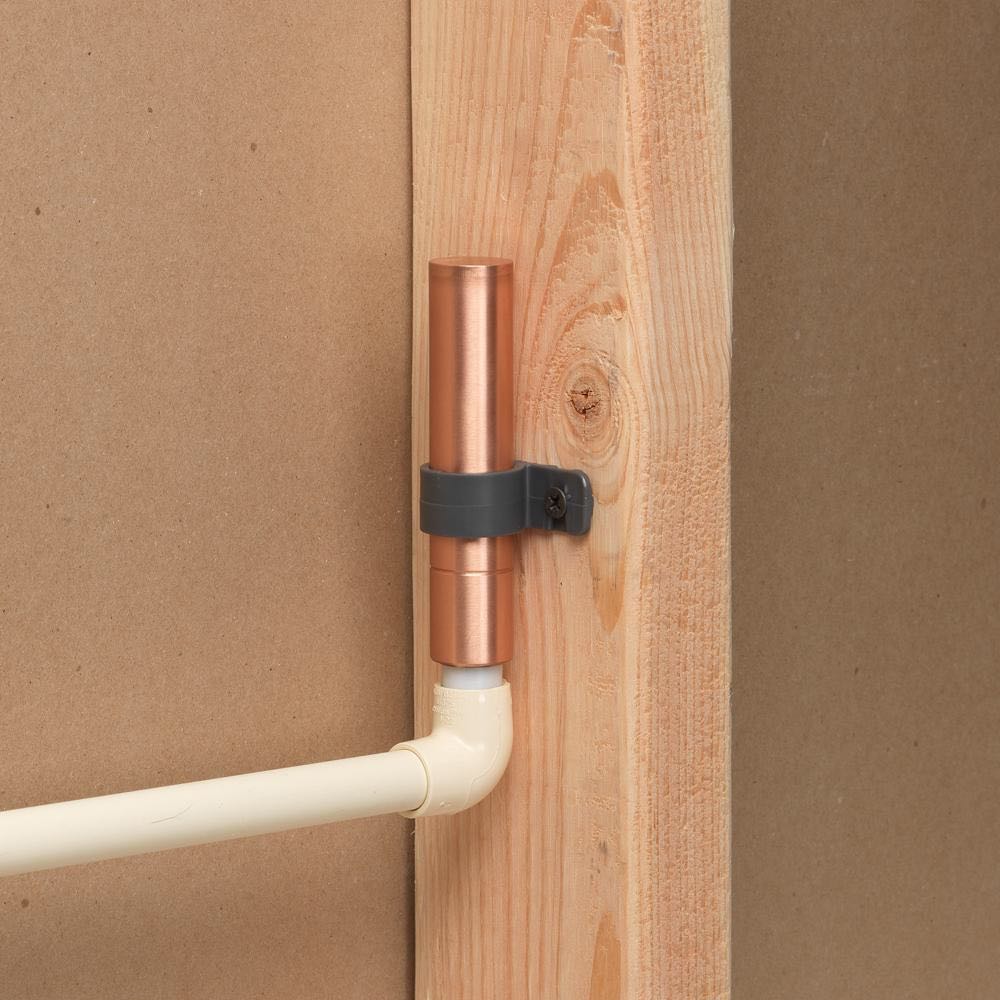Product Categories
Have you ever heard the pipes rattle or bang when the toilet fills and then suddenly stops? Or how about when the washing machine is done filling, you hear a loud bang from the pipe? This pressure surge is called "water hammer." Water hammer is caused by the sudden stop or change in direction of water flow, and it very common in residential plumbing. In most cases, water hammer does not cause any damage to plumbing but it can be very annoying. In some rare circumstances, water hammer can cause failure to fittings or pipes.
There are few things to check first before you install a water hammer arrester ,It it turns out you need to install one ,the premise is the same for other water lines ,
Check Water Pressure
The first thing to do when you hear water hammer in your house is to check the water pressure. Often you will hear much more hammering and knocking noises when the household water pressure is too high. Test the water pressure with a gauge that can screw onto an exterior hose bib or behind the washing machine. If the pressure is above 75 pounds per square inch (psi), then a pressure regulatorshould be installed or replaced if the existing one has gone bad. The pressure regulating valve should help maintain a safe and even water pressure and thereby prevent the water hammer.
Investigate the Cause
It could be that the household water pressure is within the normal limits of pressure but that you have recently installed a new washing machine, dishwasher, or ice maker line and this is causing water hammer. If that is the case, you can install a water hammer arrester at the source to stop the hammering. You can get a water hammer arrester that can fit onto an existing water shut-off valve at any home improvement or hardware store.
Tools and Supplies You Will Need
Adjustable wrench
Pipe wrench
Pliers
Water hammer arresters
Instructions
Establish the Cause
Observe carefully to determine what appliance or fixture seems to be causing the banging in your pipes. A washing machine is a likely culprit: You may find that the pipes near the machine bang loudly each time the machine's water valve closely suddenly. (Always make sure you have checked the overall water pressure for the house—see above). Dishwashers are another common source of water hammer, as are any fixtures that abruptly stop the flow of water.
Determine an Action Plan
If the washing machine water supply is the culprit, then install water hammer arresters on both the hot and cold water supply lines. There are a variety of ways to do this, ranging from splicing into the pipes and installing permanent air-chamber-type devices in the plumbing pipes running to the faucet, to simple screw-on devices that fit onto the faucet spigots where the washing machine hoses are connected. This is the easiest solution for most people.
Most likely both sides have the same pressure and both will require water hammer arresters since both hot and cold valves on the washing machine are built the same.
Turn Off the Water and Disconnect the Hoses
Shut off the valves on the washing machine hoses tightly, then disconnect the hoses from the valves. Take care that you do not lose the washers at the end of the hoses.
Connect the Water Hammer Arresters
Connect the water hammer arrester to each water supply valve. Check to make sure that there are washers seated in the swivel nuts before connecting the hammer arresters. The washers can easily fall out and the arrester will leak badly without one. Tighten the arresters onto the valve hand-tight and then just a bit more with pliers so they are snug.
Most water hammer arresters are installed on the washing machine valves, but the instructions may recommend connecting them directly to the back of the washing machine in order to protect the washer hoses. The issue with connecting the arrester to the back of the washing machine is that it can make the washing machine sit further away from the wall. If space is too tight, then connecting the arresters to the valves may be the only option.
Connect the Washer Hoses
Connect the washer hoses onto the water hammer arresters, taking care to make sure that you match up the hot water hose to the hot water supply. Once again make sure that the hose washers are in the swivel nuts.
Turn the Water On
Turn the water back on and check for leaks. If any joints are leaking, tighten them just a bit more, using pliers. The arresters will work at any angle so position them however they best they work for your situation.
Your water hammer should now be silenced. It's possible, though, that other appliances will also need to receive the same treatment. And it's possible that severe problems may need to be addressed by a plumber who can install permanent water hammer arresters in the plumbing pipes themselves.
Aaron Stickley

Previous: Water Hammer Arrestors
Next: Water Hammer >


